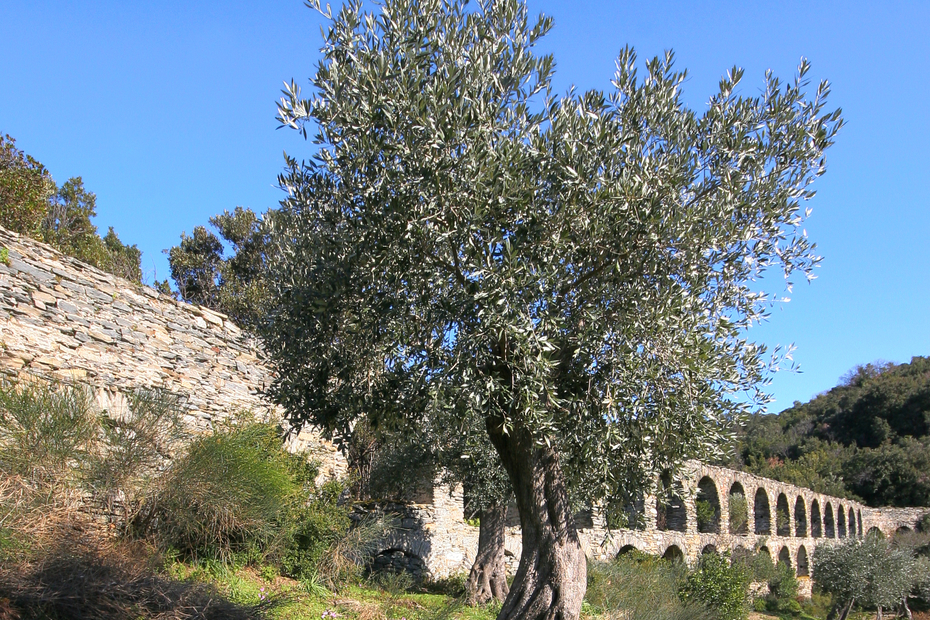The olive, whose botanical name is Olea, belongs to the family of Oleaceae and includes some 30 species. Nowadays it is cultivated not only in its birthplace, the Mediterranean, but also around the world and notably in the U.S., China, Australia and Argentina.
The olive tree is a hardy evergreen that grows as high as 20 metres. The species cultivated in the Mediterranean is Olea europaea. The tree prefers mild winters, rainy autumns, hot, dry summers and a lot of sunshine. It is resilient and can handle drought. Thanks to its root system it can grow on stony and infertile soils, and it helps prevent erosion.
Olive trees blossom from March to June depending on the area. From the 20 florets that come out on each “bunch” only one olive will emerge. All through the summer the flower turns to fruit, which will be ready for picking in November. The fruit is green at first to become violet to mauve before turning completely black depending on the variety.
The oil content of the fruit fluctuates between 15-35%. Depending on the weight, the olive can de divided into three categories: Small fruit (weight up to 2 grams), Medium fruit (weight from 2 to 5 grams) and Large fruit (weight above 5 grams).
In Greece, olive trees are cultivated in 50 out of the 54 municipalities. Annual olive oil production is over 400,000 tons. Greece, although a small country, is the third largest producer of olive oil in the world. Per capita consumption, however, is the highest in the world: 19 kilos annually.
Exports account for about half of total production, at approximately 190,000 tons. Of that, 95% is exported to other E.U. countries, while the remaining goes to non-European Union countries such as the U.S., Canada, Australia, and Japan.






